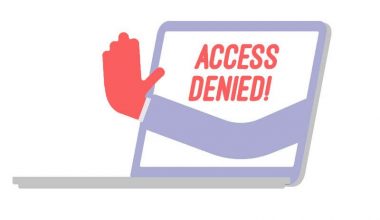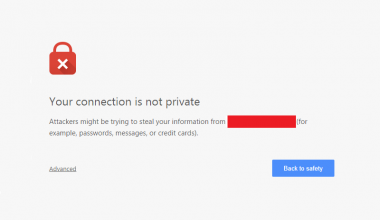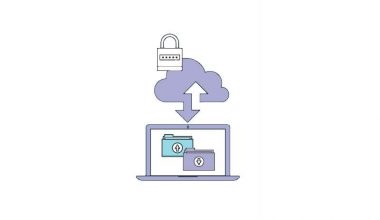Cyberbullying is the use of electronic devices, internet, and social platforms to harass, intimidate, and threaten others, especially children and teenagers. Much like the traditional bullying, cyberbullying has substantial psychological impacts on the bullied.
Studies show that more than 33% of American children are subject to cyberbullying. Three out of ten victims of cyberbully attempted committing suicide. These alarming figures bring cyberbullying to the front burner, making it one of the most debated issues by parents across the world.
However, preventing cyberbullying in society is a collective effort of parents, teachers, and other concerned citizens.
Signs a child is cyberbullied or is a cyberbully
Here are some common signs you should watch out for.
- Increasing or decreasing the use of internet-enabled devices can point to two facts: either a child is a bully, or he is being bullied.
- Constant expression of emotional response when online. A regular outburst of laughter, anger, or being upset are indicators that a child is a bully or a victim.
- When a child hides his device from you when or avoids talking about his online activities
- When favorite activities or social events are no longer enjoyable, then a child is likely to be a victim of cyberbullying.
- When old social media accounts are closed down or new ones pop-up instantaneously
How to prevent Cyberbullying
If you notice any signs of cyberbullying showing that a child is a victim, as an adult, you should give such child necessary emotional and psychological support. Also, if a bullying tendency is observed in a child, such a trend should be addressed seriously to show that cyberbullying is a social vice frowned at.
Below are other steps you can take to prevent cyberbullying
- Be aware precisely of what cyberbullying entails. To curb the menace of cyberbullying in the society, you should research and understand what cyberbullying is, how it happens, and how you can prevent it.
- Protect your password and other details from your peers. In this way, you prevent bullies from having access to your social media accounts and email. You wouldn’t want bullies to post false or intimidating information or picture on your social media page, or use your email address to send embarrassing photos or emails to the public.
- Do not upload sensitive or embarrassing photos and images of yourself on social media. Bullies can use such pictures to harass, blackmail, or intimidate you.
- Think before you post. Posting damaging information online can seriously damage your reputation and generate strong reactions against you, which can be considered as bullying.
- Raise the alarm by reporting cyberbullying. You can raise the alarm by reporting to your parents, school authority, anti-cyberbullying movements, or campaign groups.
- Use privacy controls settings to screen out those who can see your profiles and updates to your friends.
- Delete messages from people you don’t know without opening the message. This step is essential to prevent your system from being infected with malware that compromises your system security in a bid to steal vital information from you.
- Try as much as possible to keep all personal information personal. Do not give out information like address, email, phone no, etc. online to strangers.
- Ignore messages from cyberbullies. Replying messages and comments from cyberbullies will strengthen cyberbullies to do more bullying.
- Preventing cyberbullying starts with you not being a cyberbully, but by treating others the way you want to be treated.
- Make sure you always log out whenever you use public computers to access your emails and social media accounts.
- Keep a copy of all harmful contents sent to you or posted on your social media page. Keeping records is useful in apprehending cyberbullies or blocking their accounts
- Block all cyberbullies from your social media platforms. In this way, you don’t get to see their hurtful posts. Also, be wary of accepting ‘Friend requests’ from people you don’t know or don’t have much information about.
- Educate others about the harmful effects of cyberbullying. Speak out, tell your friends engaged in cyberbullying on the disastrous impact of cyberbullying. Tell adults around you if need be.
Steps to take to prevent cyberbullying as a parent
- The computer system should be kept in an open and accessible place, not in your child’s bedroom
- Learn how social media networks work. Get yourself familiar with the workings of Facebook, Snapchat, Instagram, and Twitter. These are the most popular social networking sites you should be familiar with.
- Monitor your child’s online activities remotely using parental control and monitoring services.
- Install VPN on your ward’s device to anonymize their online location. RitaVPN is one of the best VPN you can utilize.
- Talk with your children, ask them if they are experiencing any issues online. Build their confidence in you. Let them know they can come to you for help if they are experiencing cyberbullying online.
- Do not overreact by blaming your children. If your child is a victim of cyberbullying, be supportive of the child while also finding a lasting solution to cyberbullying.
- As a parent, you should understand that the negative effect of cyberbullying is physical, much more terrible than the impact of traditional cyberbullying. You have to help your child overcome the emotional effects of cyberbullying, do not neglect your kid’s report of cyberbullying, or shrug it off. Instead, be proactive and about tackling cyberbullying when it comes to your child
- Do not threaten to ground your children’s phones or computers; doing this can make them more secretive about their online activities.
- Talk to your child’s school counselors to ensure that your child is not bullied in school. Cyberbullying starts from the traditional bullying in school or home environment.
- Ensure that internet etiquette or safety awareness is included in the school curriculum. This will create awareness within the students about the adverse effects of bullying in society.
Conclusion
Tackling cyberbully in the community is a collective effort of individuals in the community. The responsibility falls on the members of the society to educate the community about the evils of cyberbullying. Also, there should be zero tolerance for cyberbullying in the community.
The school is a potential breeding ground for cyberbullying. To tackle the menace of cyberbullying, the school needs to enact strong policies against cyberbullying, which should include setting up dedicated helplines and mails to report any issue of cyberbullying.






